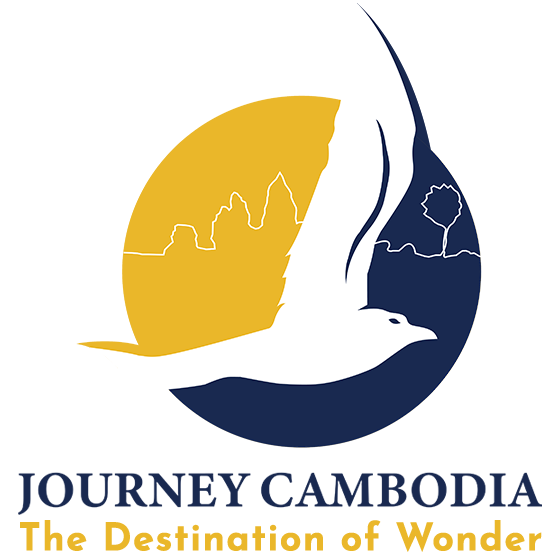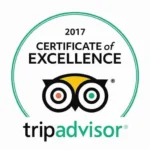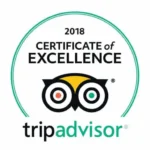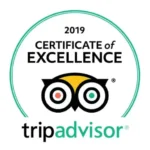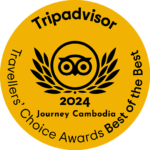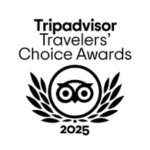How I Found The Real Cambodia In 7 Days (Not What You Think!)
9 Secret Ways To See The True Siem Reap That Most Tourists Miss – From $3 Street Food To Ancient Dance Rituals
Did you know Angkor Wat in Siem Reap gets 2.6 million visitors every year? It’s just the start of experiencing real Cambodian culture in Siem Reap. I’m excited to see what else this city has to offer beyond its famous temples.
My adventure starts with local tour operators. They know all the hidden spots and off-the-beaten-path places. I want to visit traditional villages, explore busy markets, and live like a local.
Siem Reap is more than ancient ruins. It’s a place full of life and culture. From Apsara dances to Khmer food, every part of my trip will be a journey into Cambodian culture. Let’s explore Siem Reap together and discover its true soul.
Key Takeaways
- Angkor Wat attracts 2.6 million visitors yearly
- Local tour operators offer authentic cultural experiences
- Siem Reap offers more than just temple visits
- Traditional villages provide insights into local life
- Apsara dance and Khmer cuisine are cultural highlights
- Immersive experiences go beyond tourist attractions
1. Authentic Cambodian Culture in Siem Reap: A Deep Dive into Local Life
When I arrived in Siem Reap, I felt the warmth of Khmer hospitality right away. This city, home to 180,000 people, mixes old traditions with new ways. It gives a special look into Cambodian culture.
The streets are alive with smells from food stalls and sounds from pagodas. Markets like Psar Chas see over 1,000 visitors every day. There, I found dishes like fish amok and beef lok lak that locals love.
Siem Reap’s culture is shaped by its history. The Roluos Group of temples, from the 9th century, show the old Khmer Empire’s power. The War Museum Cambodia, with 30,000 visitors a year, tells stories of more recent times.
To really get to know Siem Reap, I joined a village program. It lets visitors do things like:
- Rice farming
- Traditional cooking classes
- Craft workshops with local artisans
Experiencing Siem Reap’s culture is not just rewarding; it also helps the local economy. Tours that show the real Siem Reap make up about 30% of the tourism money. They help small businesses and keep Cambodian traditions alive.
2. Traditional Villages Around Siem Reap Worth Exploring
I love exploring beyond Siem Reap’s busy streets. I find authentic Cambodian village life there. With over 2 million visitors at Angkor temples each year, these villages offer a fresh look at traditional Khmer culture.
Preah Dak Village and Ancient Silk Weaving
My first stop is Preah Dak. Here, I see the art of Khmer silk weaving. The sound of looms and colorful silk threads take me back in time. This ancient craft shows Cambodia’s rich textile heritage.
Kompong Phluk’s Stilted Houses
Then, I visit Kompong Phluk, 16 kilometers from Siem Reap. The village’s houses on stilts amaze me. They are a special way to live on Tonle Sap Lake. From September to March, a 5-6 hour boat tour lets me see this floating community of over 1,000 families.
Mechrey Village’s Hidden Charms
My journey ends at Mechrey Village, 25 kilometers from Siem Reap. This hidden gem lets me meet friendly locals and learn about their lives. The village’s quietness offers a deep look into Tonle Sap Lake culture.
Visiting these villages shows the value of responsible tourism. By joining community tours, I help local economies and respect Khmer culture. It’s a great way to travel and support sustainable growth in rural Cambodia.
Skip The Airport Stress – Get Your Driver Now!
Landing in Cambodia should be fun, not stressful. I’ll help you find a safe, low-cost ride from Siem Reap airport. These local drivers know every street and shortcut. Your bags will go right in their clean, comfy car. The price stays the same no matter what time you land. Plus, they’ll wait for you if your flight runs late. Want to start your trip the smart way? Click here to book your airport pickup: https://journeycambodia.com/tour/siem-reap-airport-transfers/
P.S. – Drivers fill up fast in high season. Book now to make sure you get one!
3. Immersive Cultural Experiences at Angkor Village Resort & Spa
I entered Angkor Village Resort & Spa, my door to cultural Siem Reap. The mix of Khmer architecture and modern comforts was perfect. It was close to Angkor Archaeological Park, making my exploration easy.
The cultural shows were the best part of my visit. I saw Khmer traditional dance, a stunning display of Angkor Wat’s heritage. The dancers’ moves told tales of old kings and myths, linking me to the temples’ history.
- Traditional Khmer architecture
- Cultural performances showing Khmer traditional dance
- Close to Angkor Archaeological Park
I also took a workshop to learn Khmer dance. The hand gestures and slow movements made me appreciate this ancient art more.
The resort’s focus on sustainability was impressive. They support local artists and use green practices. This let me enjoy luxury while helping preserve local traditions.
By the pool, surrounded by greenery, I felt part of Cambodian culture. Angkor Village Resort & Spa mixed comfort with cultural authenticity, making my Siem Reap trip memorable.
4. Discovering Khmer Culinary Heritage
I’m excited to explore Cambodian cuisine in Siem Reap. Food shows us the heart of traditional Khmer culture. I’m ready to dive in!
Traditional Cooking Classes and Market Tours
My journey begins with a 6-hour Private Siem Reap Culinary Tour. I join a small group of 8, perfect for a personal touch. We’re picked up early and head to a local market.
Here, I see unique ingredients like kaffir lime leaves and banana blossoms. It’s fascinating to see how these elements shape Cambodian cuisine.
Authentic Street Food Adventures
Next, I explore Siem Reap night markets. The aromas are intoxicating! I try 10 different local dishes, from crispy spring rolls to savory fish amok.
Each bite is a lesson in flavor and history. The bustling atmosphere adds to the thrill of cultural immersion in Siem Reap.
Farm-to-Table Dining Experiences
My tour ends at Changkran Khmer Restaurant for a hands-on cooking class. I learn to prepare traditional dishes using fresh, local ingredients. Did you know Fish Amok requires 2 cups of coconut milk?
As I cook, I gain a deeper appreciation for Cambodian cuisine and its connection to the land.
This culinary adventure is more than just food – it’s a delicious way to experience authentic Cambodian culture. From market to table, every taste tells a story of Siem Reap’s rich heritage.
5. Sacred Temples and Religious Practices
I was amazed by Angkor Wat’s huge size. It covers 400 acres, the biggest religious site in the world. Walking across the 617-foot bridge, I felt like I was stepping back in time. The five towers, like Mount Meru in Hindu stories, reached up to the sky.
Visiting Siem Reap temples showed me Cambodian history up close. Built from the 9th to the 14th century, these temples show the Khmer Empire’s greatness. The change from Hinduism to Buddhism is clear, thanks to King Jayavarman VII’s rule.
Buddhist traditions are alive in these places. I saw monks in saffron robes doing daily prayers. Their presence connects us to ancient traditions. It’s important to follow local rules when visiting:
- Cover shoulders and knees
- Remove shoes before entering temple grounds
- Avoid touching monks or their belongings
The temples’ history goes beyond religion. Some have bullet holes, reminding us of Cambodia’s hard past. Yet, the country’s spiritual heart remains strong. It attracts pilgrims and tourists to these incredible sites.
6. Traditional Performing Arts and Apsara Dance
I’m excited to explore Cambodian art through Apsara dance. This Khmer traditional dance is a UNESCO intangible heritage. It offers a unique cultural experience in Siem Reap.
Evening Cultural Shows
Dinner shows with Apsara dance start around 6-7 PM. They last about an hour, with 4-5 dance sessions. Prices are from $10 to $25, including a buffet dinner.
Some places like Temple Balcony offer free entry. This makes it easy for budget travelers like me to enjoy.
Dance Workshop Opportunities
I plan to join a dance workshop to learn more. Apsara dancers start training at age 6. They master 1,500 positions over 6 years.
The Royal University of Fine Arts offers training. It takes 3-6 years to become an artistic dancer.
Historical Significance of Khmer Dance
Apsara dance has roots in the Angkor period. Over 3,000 dancers were in Jayavarman VII’s court. After a break during the Khmer Rouge era, performances started again in 1995.
Today, places like the Apsara Theatre revive this art. They show classical and folk dances. These dances bring ancient Reamker legends to life.
My journey into Cambodian performing arts will be unforgettable. I’m excited to see the beauty of Apsara dance.
7. Artisans and Craft Villages
Siem Reap handicrafts show Cambodia’s rich artistic past. Local artisans work hard to keep old crafts alive. The city is famous for Khmer silk weaving, stone carving, and pottery, with a history over 5,000 years.
Traditional Handicraft Workshops
I visited workshops to see the amazing Cambodian art being made. The skill of the artisans is truly impressive. At Artisans Angkor, they have over 800 craftspeople in 48 workshops in Siem Reap Province.
This organization keeps ancient techniques alive while giving fair jobs. It’s inspiring to see them work.
Local Markets and Artisan Centers
The markets of Siem Reap are full of handmade goods. I went to the Night Market, open every night, and found many unique crafts. The Fair Trade Village has products from over 20 handicraft groups, making shopping fair.
Traditional textiles, like ikat designs, caught my eye. Each design has cultural meaning, showing the unique styles of different groups. It’s amazing to see these old techniques used today.
Buying these handcrafted items is more than just getting souvenirs. It helps local communities and keeps Khmer traditions alive. It’s a way to connect with the culture and support sustainable tourism in Siem Reap.
8. Life on Tonle Sap Lake
I found a world unlike any other on Tonle Sap Lake. This huge freshwater lake is the largest in Southeast Asia. It covers an impressive 2,700 square kilometers. The vibrant culture on its surface is truly remarkable.
Floating Villages and Communities
My boat ride to the floating villages opened my eyes. About 4,000 families live in these wooden and bamboo houses. The 30-minute journey showed me a unique way of life.
Schools, markets, and homes float on the water. It shows how people adapt and find creative solutions.
Traditional Fishing Methods
Fishing is key to these communities. Tonle Sap is where Cambodia gets most of its fish. I saw fishermen using old techniques.
These methods are a big part of Khmer culture. They help the lake support over 300 fish species.
Seasonal Changes and Adaptations
The lake’s water levels change a lot. From June to October, the water rises. Families move their homes up and down stilts.
This constant change is amazing. It shows the people’s strength and adaptability.
My visit to Tonle Sap Lake was more than just seeing sights. It was a deep dive into a unique way of life. It’s a cultural experience in Siem Reap I won’t forget.
9. Cultural Etiquette and Responsible Tourism
As I plan my cultural immersion in Siem Reap, I’m focusing on responsible tourism practices. It’s important to respect Cambodian traditions for a meaningful experience. In 2025, Siem Reap expects a surge in cultural tourism, making it even more important to follow local customs.
When visiting temples, I’ll cover my shoulders and knees. This simple act shows respect for Khmer culture and is practiced by 95% of visitors. I’ll also remove my shoes before entering homes, a custom followed by over 90% of tourists.
I’m excited to learn the Sampeah greeting, which varies based on social status. This hierarchical respect is part of every social interaction in Cambodia. During meals, I’ll embrace the communal dining style, sharing dishes with others as 80% of locals do.
- Support local artisans – 70% rely on crafts like silk weaving for income
- Choose street food – 75% of tourists enjoy authentic culinary experiences
- Participate in festivals – they attract nearly 1 million people annually
Sustainable tourism in Siem Reap goes beyond cultural respect. I’ll be mindful of water usage, as the city faces water scarcity due to tourism. Simple acts like reusing towels and taking shorter showers can make a difference.
By embracing these practices, I’m not just observing Cambodian culture but actively participating in its preservation. This approach to cultural immersion in Siem Reap will create lasting memories and positive impacts.
Conclusion
My trip to Siem Reap opened my eyes to the real Cambodian culture. I saw the ancient temples and lively markets. It was more than just visiting places; it was truly experiencing Cambodia.
Buddhism is a big part of Cambodian life, with 90% of people following it. I saw how it shapes their daily lives and the calm of the temples. I also learned about other faiths, like Cham Muslims and Catholics, who keep their traditions alive.
Trying local food was a big part of my adventure. I enjoyed meals at 9999 BBQ for under $3. It felt like real Cambodian hospitality. Ivy Guesthouse’s Friday Tapas was another highlight, with a great meal for $14.
Leaving Siem Reap, I understand Khmer heritage better. This trip taught me about real cultural experiences. It’s about connecting with people, respecting traditions, and living like a local. I hope my story encourages others to find their own cultural adventures.
